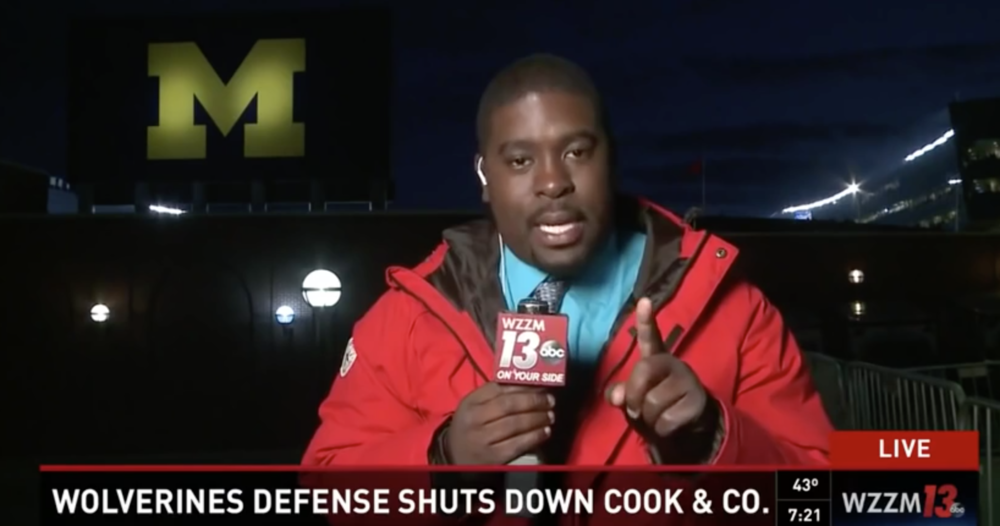In this article, the sports anchor is quoted as writing on Facebook that "we tried bringing the most up to date stats as we could as we were going live at the exact moment everything was happening. Had two scripts written and ready to go and got bad information off my phone while on air. And then we immediately corrected it when we could. I’m sorry for getting it wrong but in the end it was corrected and it certainly won't be a finish forgotten by any of us.”
 Now if you have worked in TV news and covered a live event, especially a sports event even once, you know that it can be very hard to get the right information on the air in the final minutes of a newscast. Frankly, I am shocked this kind of gaffe doesn’t happen more often. The biggest reason why is the reporter has to leave the event in order to go live. That’s generally because of where you have to park the live truck and coverage rights, since the live event itself is televised.
Now if you have worked in TV news and covered a live event, especially a sports event even once, you know that it can be very hard to get the right information on the air in the final minutes of a newscast. Frankly, I am shocked this kind of gaffe doesn’t happen more often. The biggest reason why is the reporter has to leave the event in order to go live. That’s generally because of where you have to park the live truck and coverage rights, since the live event itself is televised.
So how can the reporter know what is happening when he/she doesn’t have eyes on the event?
There are several ways to prevent this, the biggest being putting someone in the stadium, who has news sense and can let the reporter know. But based on the description of how it went down quoted above, they may have attempted this solution. Guessing whoever was on the phone, or whatever site was used, will not be part of the equation next time.
This gaffe does open up discussion for an even bigger issue, and that is the need to be first, even at great risk of being wrong. This particular flub is making all sorts of rounds because it seems like such an obvious mistake.
How could the reporter not know? How could you miss something when you are at the event? Look at his live shot background. He had huge stadium walls separating him. A big part of the blame here, lies with the decision on how to execute bringing the latest about the game to the newscast audience.
There is an age old argument that the people who really give a rip about the game or sporting event you are at, are actually watching it. So the push to be first is irrelevant because the audience that cares is not watching you, they are watching the game. But there is a strong counterpoint that this is a huge event everyone will be talking about in the DMA and you simply cannot ignore it. So here’s where I am going to get bold and ask, why not go non traditional?
Why not keep the reporter in the stands, so your eyewitness actually knows what happened? Can you show a live pic, in the place where crews are allowed to be (even if that’s outside the stadium) and mention that your reporter is there, and live tweeting about the event? Can you show tweets fullscreen from your crew in the stands to show that you are all over the coverage? Here’s why this is a win-win scenario: The people watching the game, may still engage with your sports reporter on the scene through social media. The reporter can focus on the experience of the game for those who could not go for TV and tweet about the event with no worries about missing a key play. So the reporter can turn a piece on how much the fans are loving the event, or something controversial that happened earlier that airs in the newscast, then tweet about the here and now in the final minutes of the game. Put the tweets up, put up a live pic and keep your information accurate. It hits more audience because he can even be interacting with people who are still at the game.
The problem TV stations face is how to disseminate information in this digital age. There is a change in viewpoint we address in the full article on Survivetvnewsjobs.com. As TV stations cover a variety of live events, the bottom line is that they need to discuss how they will engage with the viewers actively. Simply showing up and reporting what you hope is first and right, is not enough anymore.
Your viewers use social media to track events, they expect you to as well.








